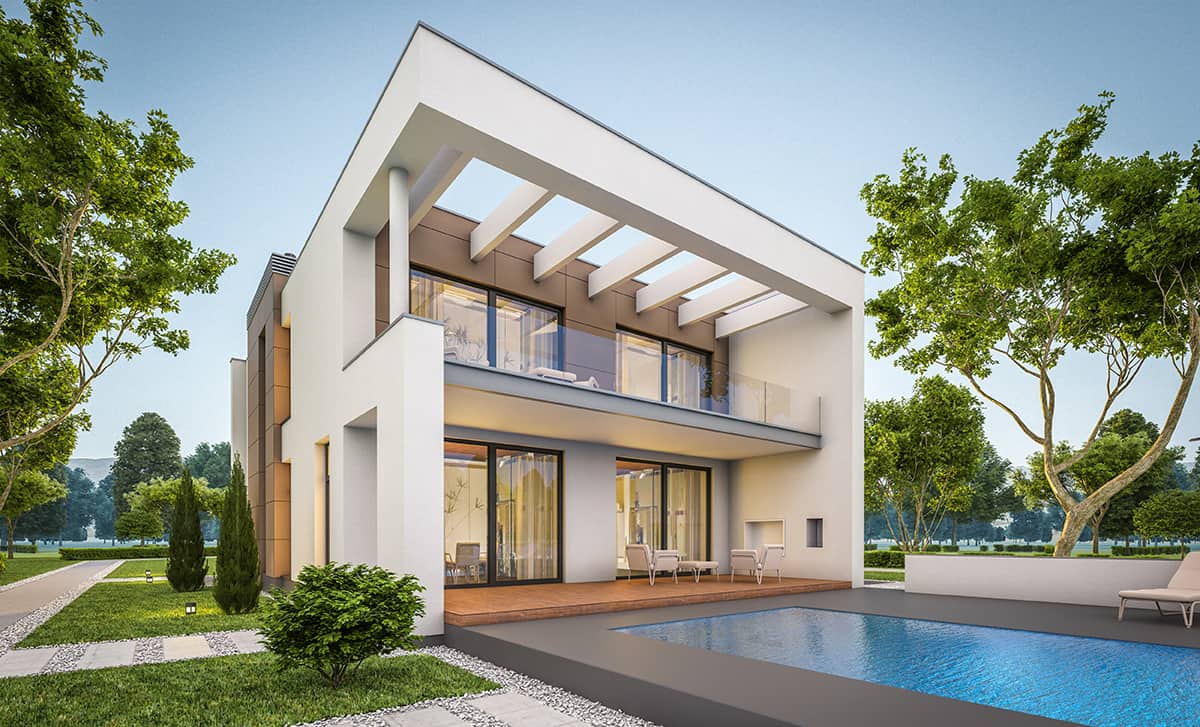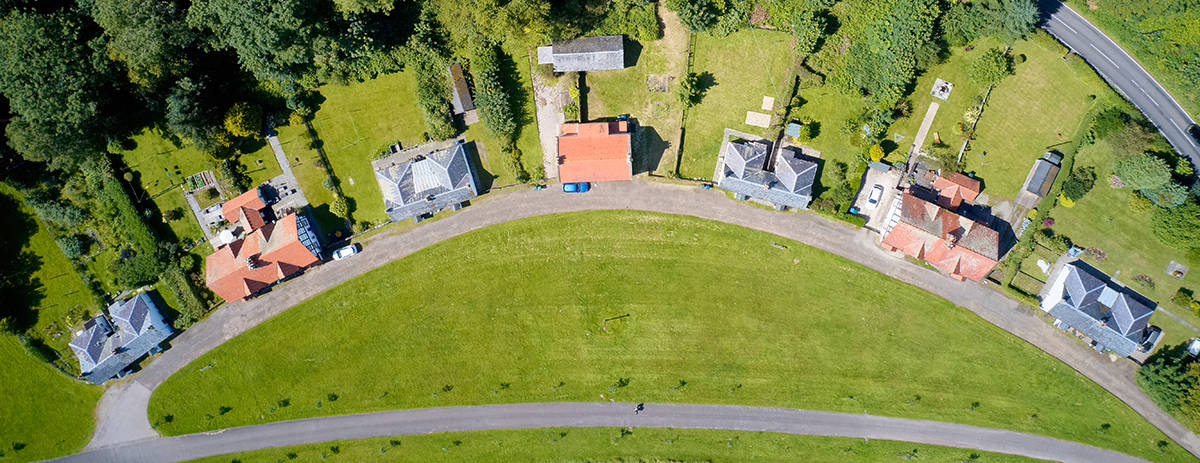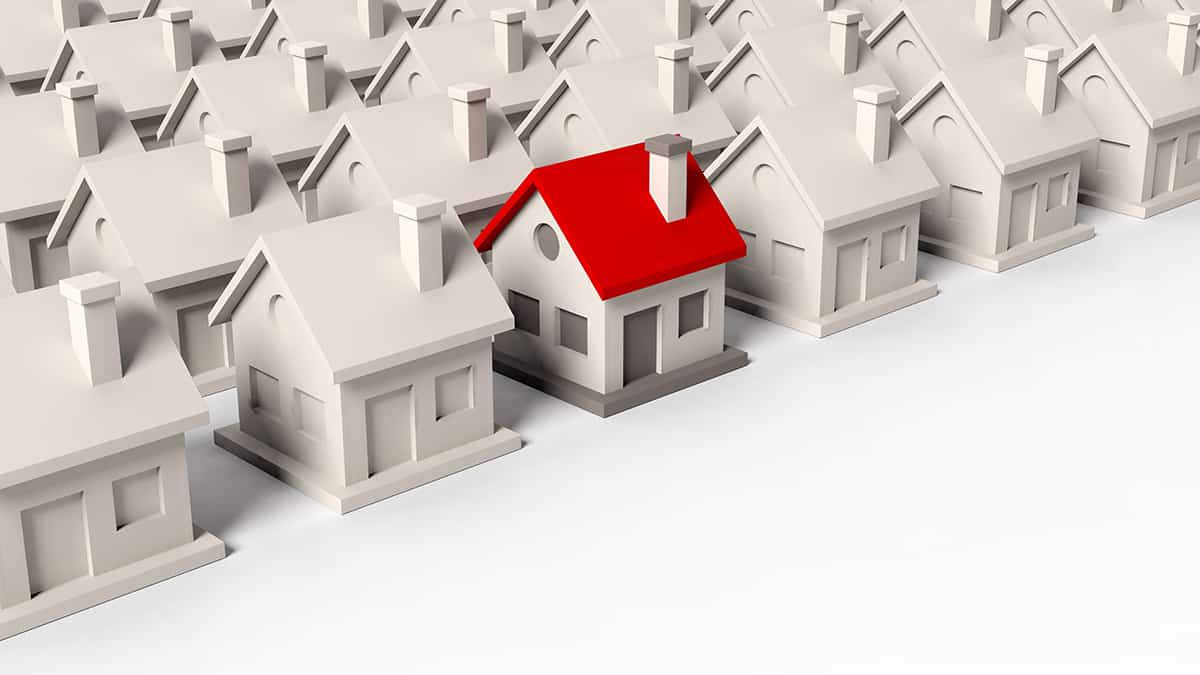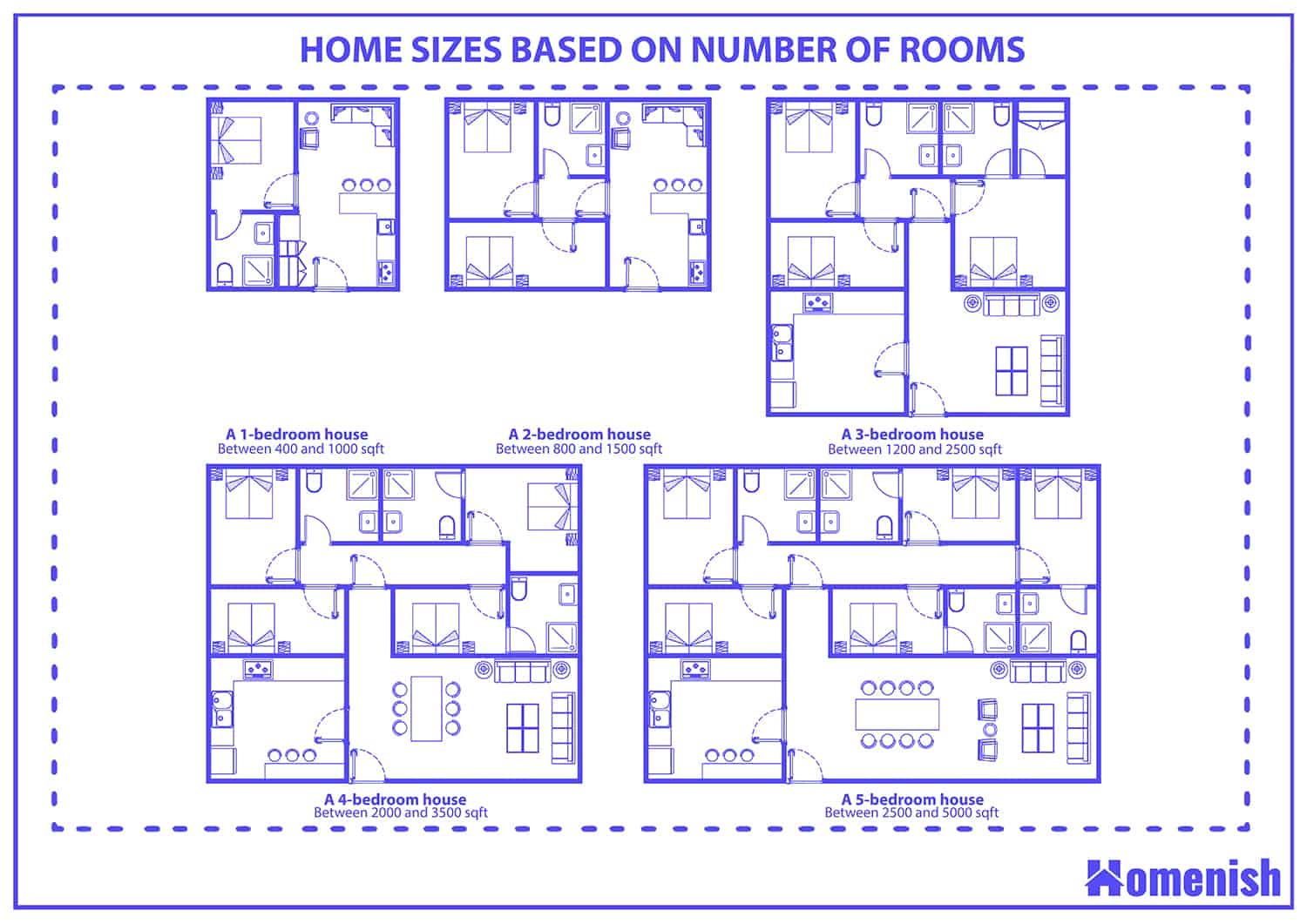If you’re thinking about building a housing complex, it’s important to consider how many homes you can build on the land you have. There are a lot of factors to think about, like zoning rules and building codes, so the answer to how many houses you can build on 0.25, 0.3, 0.5, and 1 acre isn’t that straightforward.
Based on the assumption that the average home is 2,500 square feet, you could build:
- 4 homes on 0.25 acres (10,890 square feet)
- 5 homes on 0.3 acres (13,068 square feet)
- 8 homes on 0.5 acres (21,780 square feet)
- 17 homes on 1 acre (43,560 square feet)
These calculations do not take into account roads, sidewalks, and other features found in residential areas.
In this blog post, we will explore the various elements that influence how many houses can be built on different plot sizes, discuss how to maximize your land usage and delve into the benefits and drawbacks of building on smaller or larger plots. We will also address some frequently asked questions related to this topic.
Table of Contents
- Factors That Determine the Number of Houses on a Plot
- Maximizing Land Usage
- Pros and Cons of Building on Different Plot Sizes
- Home Sizes Based on the Number of Rooms
- FAQs
- 1. How many houses can I build on a 0.25-acre plot?
- 2. Can I subdivide my land to build more houses?
- 3. What is the average lot size for a single-family home?
- 4. How does density affect the number of houses on a plot?
- 5. Are there any restrictions that could limit the number of houses that can be built on a particular lot size?
Factors That Determine the Number of Houses on a Plot
Before diving into specifics, it is essential to understand the various factors that influence how many houses can be built on a plot of land.
1. Zoning Regulations
Local zoning regulations play a significant role in determining the number of houses that can be built on a plot. These regulations dictate the minimum lot size, setbacks, and land usage restrictions for residential properties.
2. Setbacks and Easements
Setbacks and easements are additional factors that can impact the number of houses on a plot. Setbacks are the minimum distances required between a structure and property lines, while easements are legal rights granted to others to use a portion of the land for specific purposes.
Maximizing Land Usage
To make the most of your plot size, consider various strategies and approaches that can help you maximize the number of houses built on the land.
1. Opt for Smaller House Designs
Choosing smaller house designs, such as tiny houses or modular homes, can help you fit more homes on a plot without compromising on living space or amenities.
2. Cluster Developments
Cluster developments, where houses are grouped together, can allow for shared amenities and open spaces. This type of development can help maximize land usage while maintaining a sense of community.
Pros and Cons of Building on Different Plot Sizes
Each plot size comes with its own set of advantages and disadvantages. Understanding these pros and cons can help you make an informed decision when choosing a plot for your housing project.
Smaller Plots (0.25 and 0.3 Acre)
Smaller plots between 0.25 to 0.3 acres are more affordable because they have lower land acquisition and maintenance costs. This makes them a great option for first-time homebuyers, downsizers, or those with limited resources.
The drawback of smaller plots is that they offer less flexibility when it comes to home design and construction. You have limited space to build, which can restrict the size and style of homes that can be built. This may make it difficult to accommodate larger or more intricate home designs.
Larger Plots (0.5 and larger)
If you have a bigger plot of land, usually 0.5 to 1 acre or more, you have more flexibility and freedom in designing your house, its size, and landscaping. You can build larger homes, incorporate unique features, or create spacious outdoor living areas. With more space, you also get more privacy as you can keep your home away from your neighbors and enjoy a more peaceful living environment.
However, maintaining a larger plot of land requires more time and effort, especially when it comes to landscaping and lawn care. Also, larger properties often have higher property taxes due to their increased value.
Home Sizes Based on the Number of Rooms
The size of a house can vary depending on the number of rooms, overall design, and layout. Typically, houses with more rooms have a larger total area. Here’s a general breakdown to give you an idea of how home sizes can vary based on the number of rooms:
- A 1-bedroom house or apartment usually has a total area between 400 and 1,000 square feet. These small living spaces are great for singles or couples who don’t need much space and prefer a compact, easy-to-maintain home.
- 2-bedroom houses or apartments typically range from 800 to 1,500 square feet. These homes offer more space for small families, couples, or individuals who want an extra room for a home office, guest room, or hobby space.
- 3-bedroom houses generally fall within the 1,200 to 2,500 square feet range. These homes are suitable for growing families, providing ample space for communal living areas and private bedrooms.
- 4-bedroom houses can range from 2,000 to 3,500 square feet or more. These larger homes are ideal for families with multiple children or those who desire more space for guests, home offices, or entertainment areas.
- 5-bedroom houses and beyond are typically at least 2,500 square feet and can easily exceed 5,000 square feet for more luxurious properties. These homes cater to larger families or those who want plenty of space for entertaining, hosting extended family members, or accommodating live-in staff.
FAQs
1. How many houses can I build on a 0.25-acre plot?
A: Typically, you can build one single-family home on a 0.25-acre plot, but this may vary depending on local zoning regulations and other factors.
2. Can I subdivide my land to build more houses?
Subdividing your land may be a possibility, but you will need to consult local zoning regulations and obtain the necessary permits before proceeding. Keep in mind that subdividing can also come with additional costs and complexities.
3. What is the average lot size for a single-family home?
The average lot size for a single-family home in the United States is around 0.2 to 0.3 acres. However, this number can vary significantly depending on the location and local regulations.
4. How does density affect the number of houses on a plot?
Higher-density housing, such as townhouses or multi-family units, can accommodate more homes on a single plot. However, local zoning regulations and other factors will dictate if such developments are allowed on a specific plot of land.
5. Are there any restrictions that could limit the number of houses that can be built on a particular lot size?
Yes, there are various environmental and land use restrictions that could limit the number of houses built on a particular lot size. Some of these restrictions include:
Zoning regulations—Local governments establish zoning laws that dictate the type and density of development allowed in specific areas. These laws may limit the number of houses that can be built on a lot based on factors like minimum lot sizes and maximum building heights.
Environmental regulations—Areas with sensitive ecosystems, endangered species, or critical habitats may have additional restrictions to protect these resources. Construction might be limited or prohibited in these zones.
Floodplains and wetlands—Building in flood-prone areas or wetlands can be restricted to protect people and property from potential damage and to preserve these ecosystems.
Historic preservation—In areas with significant historic or cultural resources, new construction may be limited to protect the integrity of these sites.
Easements and rights-of-way—Legal agreements or property rights, such as utility easements or public access rights-of-way, may restrict the placement or density of houses on a lot.
Soil and topography—The physical characteristics of the land, such as steep slopes or unstable soils, can limit development to ensure safety and minimize environmental impacts.




